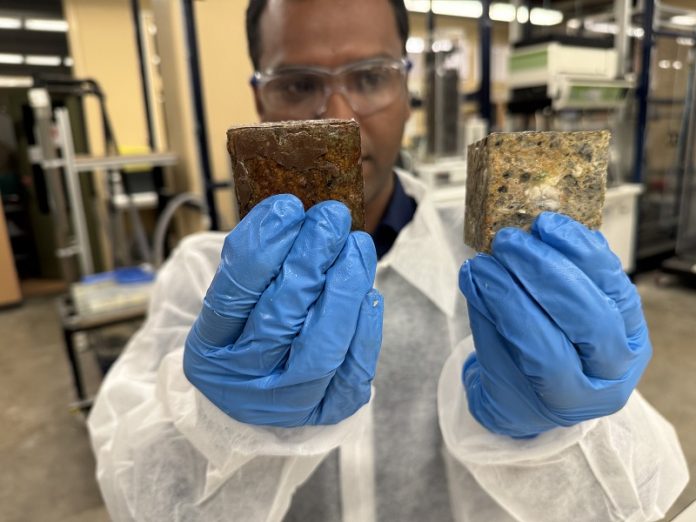
Engineers from RMIT University in Australia have developed a special coating for concrete sewer pipes that could significantly reduce the build-up of “fatbergs” in city sewer systems.
Fatbergs form when fat, oil, and grease (FOG) combine with calcium in the pipes, creating solid masses that block sewers.
These blockages are a major problem, causing around half of all sewer blockages in the United States and 40% in Australia.
Dealing with these clogs costs an estimated $25 billion per year in the U.S. and $100 million in Australia.
The new coating, a zinc-enhanced polyurethane, has shown great promise in preventing fatbergs by reducing the release of calcium from concrete pipes by up to 80%.
Calcium is a key factor in the formation of fatbergs, so reducing its release from concrete can help prevent them from forming.
In lab tests that simulated harsh sewer conditions over 30 days, the coating reduced FOG build-up on concrete by 30% compared to uncoated concrete.
Dr. Biplob Pramanik, the lead researcher and Director of the Water: Effective Technologies and Tools (WETT) Research Centre at RMIT, explains that the coating’s smooth surface prevents FOG from sticking as easily as it does to rough, untreated concrete.
While other coatings, like magnesium hydroxide, have been used for years to protect sewers from corrosion, they sometimes add to the problem by interacting with fatty acids and promoting FOG build-up. The new coating tackles this issue by both reducing calcium release and limiting FOG attachment.
The RMIT team designed the coating to be durable and long-lasting.
It can withstand high temperatures (up to 850 degrees Celsius) and has self-healing properties at room temperature. Inspired by natural regenerative processes, like how human skin heals itself, this coating can repair small scratches, extending its lifespan.
Dr. Sachin Yadav, a co-researcher, described how they tested the coating’s self-healing ability by scratching it with a blade and then observing its recovery.
Looking ahead, the team is working on improving the coating’s self-healing and strength. Dr. Pramanik is also leading a project to develop a new type of grease interceptor for restaurants, which will capture smaller FOG particles more effectively than current methods.
RMIT’s research team is collaborating with water industry partners, including South East Water, VicWater, Water Research Australia, Barwon Region Water Corporation, Queensland Urban Utilities, and the water tech company ACO, to help bring these new sewer solutions to life.



